NOTE: This post is part of a continuing series of observations: [ First | << Prev ]
April 10 through April 11 – Flower Mound, Texas
Phil got lots of great pictures of the robins this time around. Included in this set are several photographs of the newly hatched baby birds. It appears the babies were born sometime on Friday, April 10th—sixteen days after incubation began. Of the three eggs originally found in the nest, only two hatched. It is unclear what happen to the third egg and hatchling.
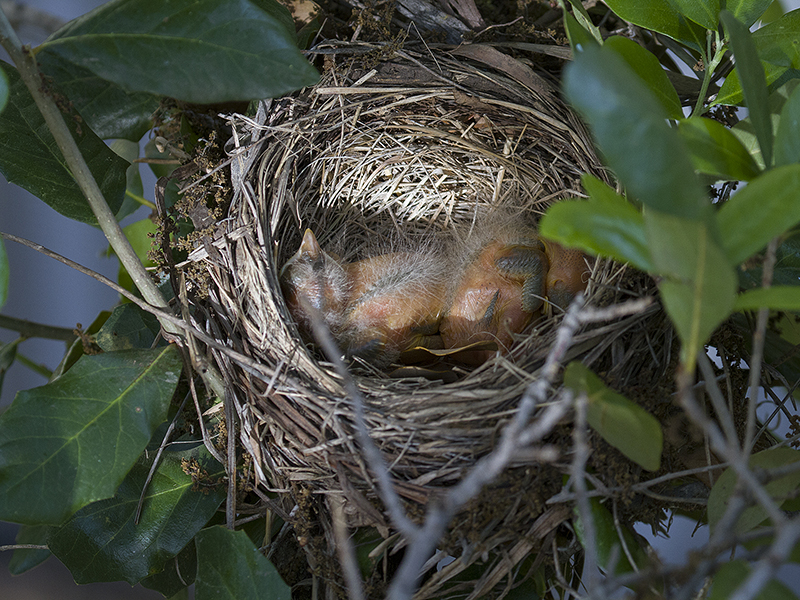

The next morning mom was found sitting on the nest and brooding her two young hatchlings. But the early spring weather proved warm enough to allow mom some time off the nest, and she left the area for a short while.

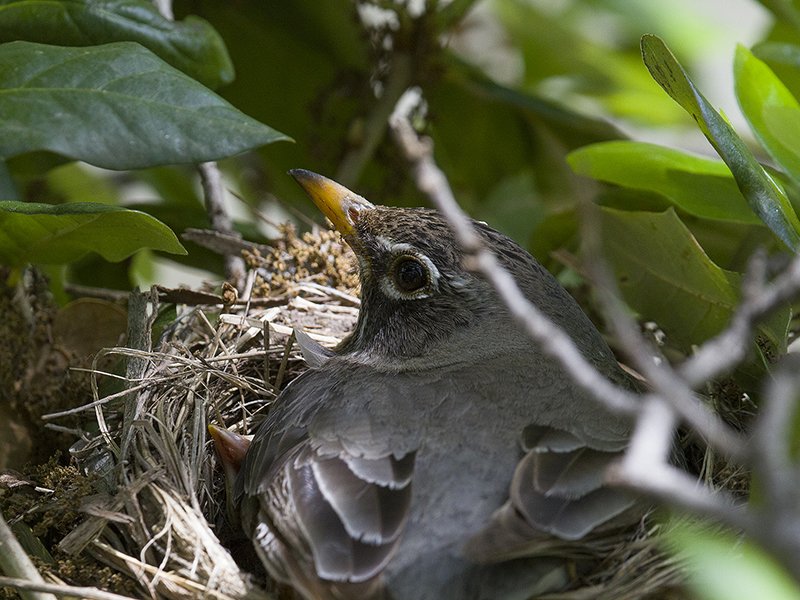
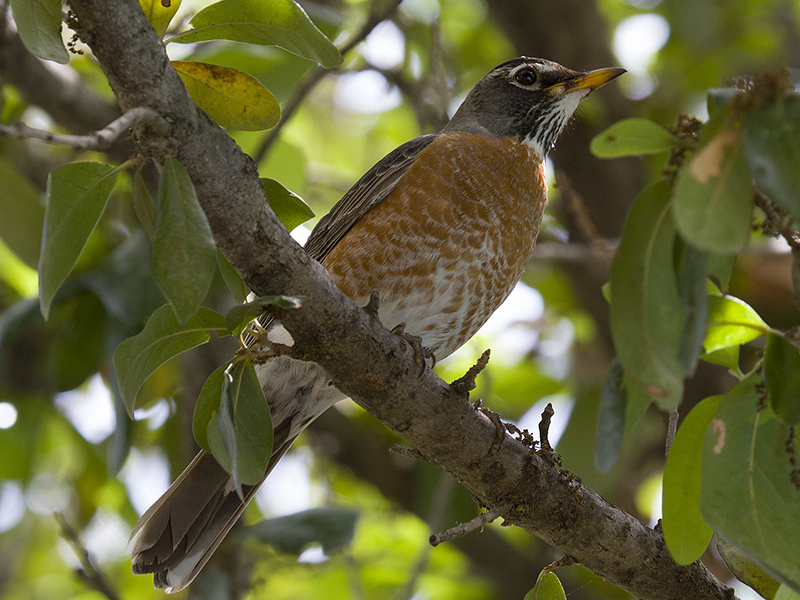
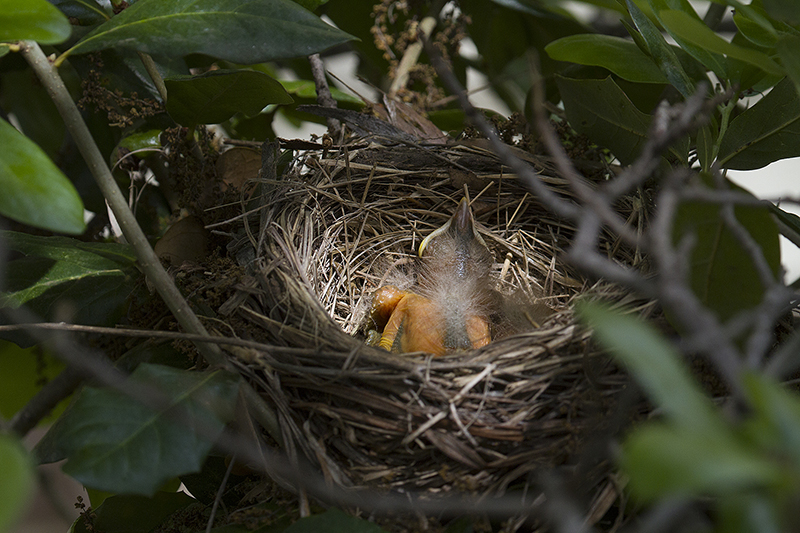
When the mother robin returned she had a mouthful of caterpillars for her hungry offspring. I count as many as a dozen or more caterpillars in her mouth at one time—what I really want to know is how in the world did she manage to catch them all!?!

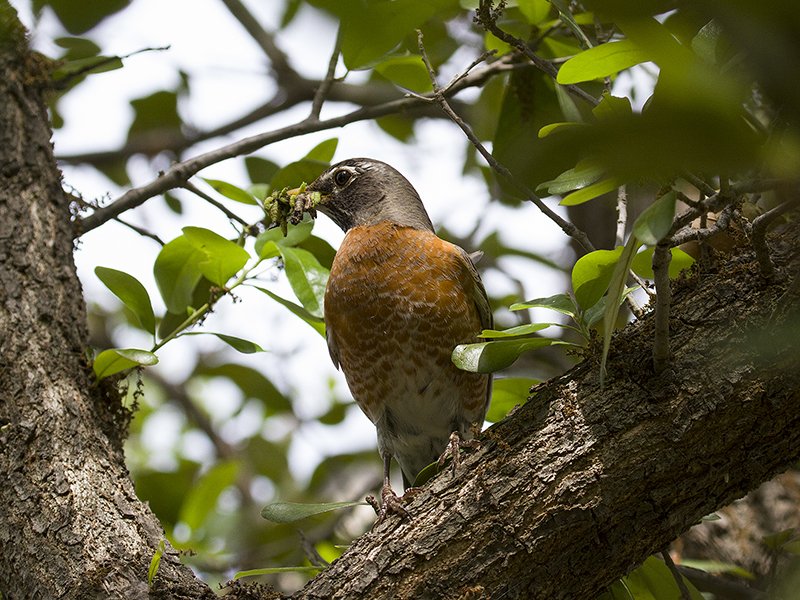


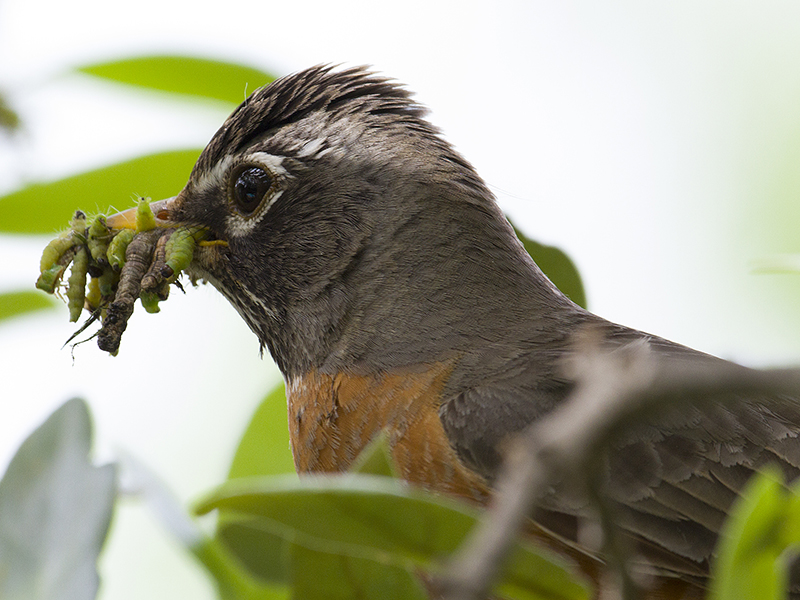
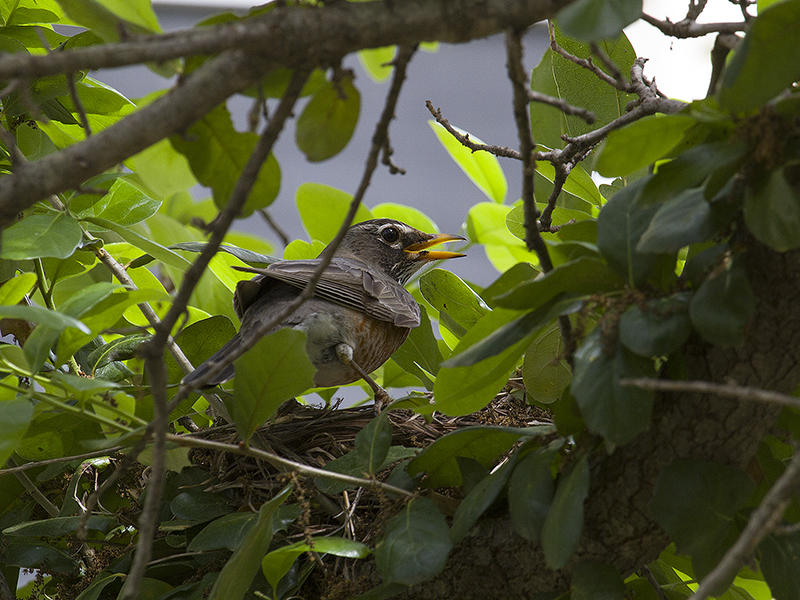
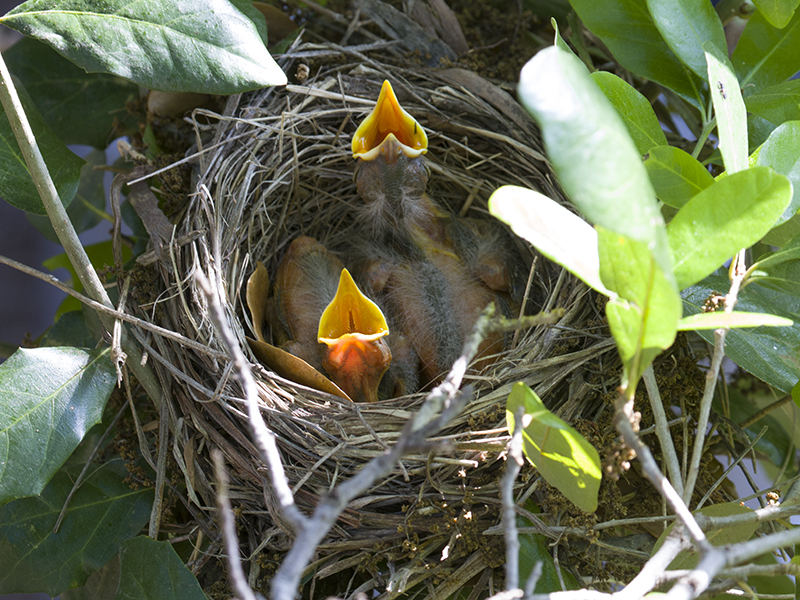
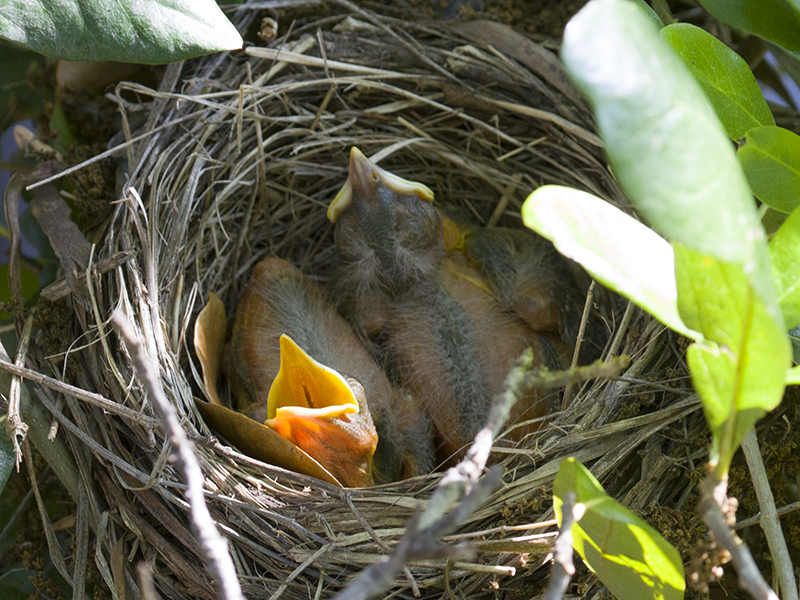
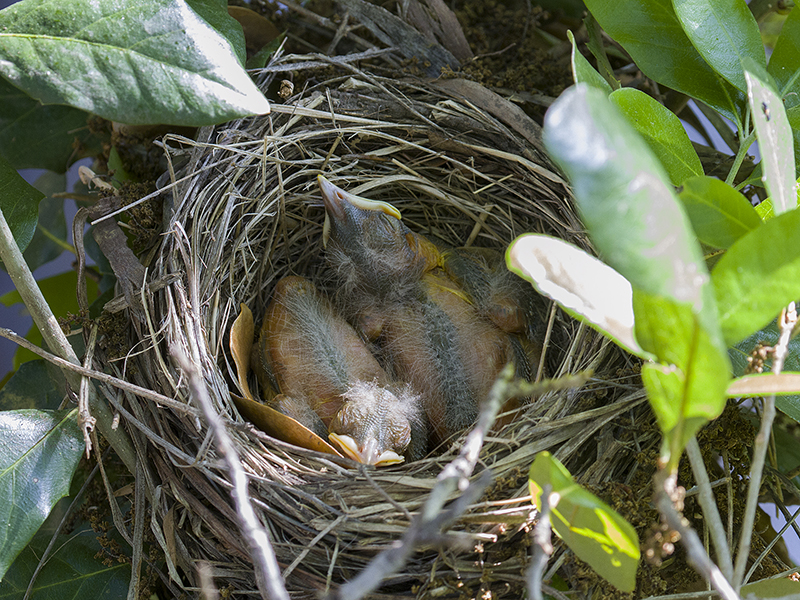

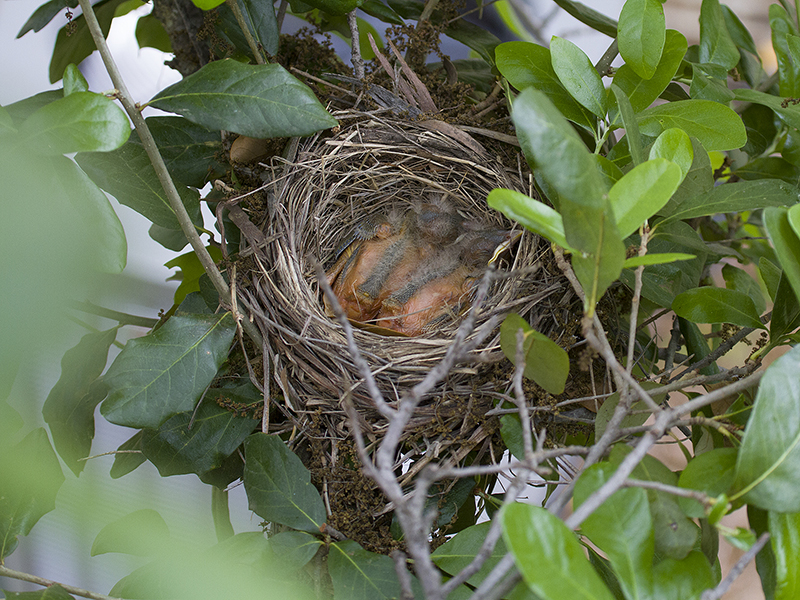
Remember, a non-intrusive viewing location is essential when observing nesting songbirds like these robins. Viewing sessions must be conducted from a respectful distance, and should be keep short and infrequent—once or twice a day for only a few minutes at a time. It will often appear as if nesting birds do not mind your presence near their nest, but in actuality the bird’s instinct to stay and protect their eggs is simply overriding their desire to flee. This creates a high stress situation for the bird, which can be detrimental to the nesting effort. Just the simple act of observing a nest can put the birds under a tremendous amount of stress. Too much and the nest will fail. Watching a nest like this one should always be done with the utmost discretion.
More next week!
NOTE: This post is part of a continuing series of observations: [ First | << Prev ]


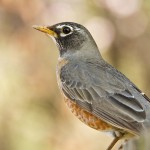




What wonderful photographs!!!! Great job!
How did you get these shots? I’m impressed!
My buddy Phil got these great shots. The Robin nested in his backyard in a readily observable place.